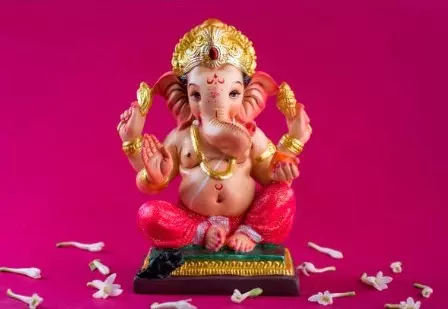
- Home
- India
- World
- Premium
- THE FEDERAL SPECIAL
- Analysis
- States
- Perspective
- Videos
- Sports
- Education
- Entertainment
- Elections
- Features
- Health
- Business
- Series
- In memoriam: Sheikh Mujibur Rahman
- Bishnoi's Men
- NEET TANGLE
- Economy Series
- Earth Day
- Kashmir’s Frozen Turbulence
- India@75
- The legend of Ramjanmabhoomi
- Liberalisation@30
- How to tame a dragon
- Celebrating biodiversity
- Farm Matters
- 50 days of solitude
- Bringing Migrants Home
- Budget 2020
- Jharkhand Votes
- The Federal Investigates
- The Federal Impact
- Vanishing Sand
- Gandhi @ 150
- Andhra Today
- Field report
- Operation Gulmarg
- Pandemic @1 Mn in India
- The Federal Year-End
- The Zero Year
- Science
- Brand studio
- Newsletter
- Elections 2024
- Events
- Home
- IndiaIndia
- World
- Analysis
- StatesStates
- PerspectivePerspective
- VideosVideos
- Sports
- Education
- Entertainment
- ElectionsElections
- Features
- Health
- BusinessBusiness
- Premium
- Loading...
Premium - Events

The valorisation of ancient India as a period of ‘scientific progress’ is a problematic rhetoric, but the marriage of modern science and myth is an even bigger travesty
One of the greatest fallacies of modernity is the projection of a constant battle between religion and science wherein religion is presented as being emblematic of all that is traditional and science as the icon of the progressive. Contemporary history has proven the contrary; religion and science have not only reconciled with one another, but are often tied together to serve political or social purposes.
The present controversy of the Speaker of the Legislative Assembly of Kerala referring to the replacement of Ganesha’s head with an elephant head as a myth and not as evidence of plastic surgery during the ‘Hindutva age’ gives us an opportunity to muse over the constituents of myth and why, as Indians, we have an amusing but troubled history with myth in our post-independent times.
At the outset, as a historian, I feel it is important for me to clarify that there is no ‘Hindutva age’ in history and the collapsing of the ancient period or mythological time with a ‘Hindutva’ age is not a very welcome phenomena, as mythology is part of our common heritage and should not be restrictively understood as the prerogative of certain communities. The second and the more important issue is the problem of valorisation of an imagined ancient period as the golden age of Indian history.
Also Read: Kerala assembly unanimously urges Centre to rename state as Keralam
Historians' warning
While historians have spent considerable time debating and contesting the boundaries and politics of the divisions of time periods in history, for the common person, the past is often a muddled mess of fragments of events, processes, and personalities in their heads wherein mythology is collapsed with history. Historians such as Romila Thapar have cautioned us against the tendency to think of mythology as history though mythology serves as an important source for history.
The identification of the ancient period as ‘Hindu’, a fallacy propagated by colonial historians and inherited by the Sangh Parivar, has led to its glorification whenever the Right Wing comes to power. That the period also witnessed the efflorescence of Buddhist, Jain, and Charvaka traditions and had rulers such as Chandragupta Maurya and Asoka, who belonged to non-Brahmanic movements, is subject to selective amnesia while the arguments that Hinduism itself is of much later origin is consciously forgotten.
In his Conjectures and Refutations: The Growth of Scientific Knowledge (2002), Karl Popper argues that ‘science must begin with myths, and with the criticism of myths.’ Popper points to the question of falsifiability in science and the deliberate and systematic efforts required to understand material phenomena in this work. On the other hand, myths often belong not to the realm of the material, but to that of the metaphysical, making them impossible to quantify, empirically study, or replicate. Hence, a crucial point of distinction between a scientific fact and a myth is falsifiability.
Science agrees that its theories are falsifiable through challenge, counter-theories, and experimentation, while myths seek legitimacy from its changelessness. Thomas Kuhn argued in The Structure of Scientific Revolutions, one of the most cited academic books of all time, that science undergoes periods of stable growth but also witnesses periods of exceptional and revolutionary revisions.
Ganesha row
In the current controversy over the Speaker’s remarks, the term “myth” seems to have been largely misunderstood. It has been interpreted by both fundamentalists and social media as a “lie” or a non-truth. Ironically, from an academic perspective, a myth is not a falsity; it is the beginning point, raw data that needs to be analysed through the process of science.
Levi Strauss, for instance, theorises that myths acts as languages that can be read and interpreted by the users. It has a cultural universe of its own and is meaningful within that universe. Strauss argued that myths are historical and ahistorical at the same time. They are historical, as they can be traced back to a historical period of its production, but they are also ahistorical, as the stories they narrate are timeless and survive both time and translations. Myths, when used as a source material for history, have to undergo rigorous analysis under the lens of methodology.
Also Read: How Kerala BJP is milking Ganesha row to divide electorate on communal lines
Ganesha, for instance, have been argued to be a pre-Aryan (Dravidian?) deity who was later incorporated into the Vedic pantheon. Romila Thapar, on the other hand, has argued that the deity must have emerged from one of the tribes, which may have used the elephant as its totem, similar to the emergence of Hanuman from a tribe that may have used a monkey totem.
Ananda Coomaraswamy (1977) regards Ganesha as a minor folk deity with affinities with yakasas and nagas, while Monier-Williams (1960) places Ganesha and Skanda at the head of the tutelary village divinities (grama-devatas), who, as the controllers of good and evil actions, guard the households.
Ganesha’s mount being the rat also suggests at him being a harvest god, as rats were one of the biggest threats to a good harvest, and their control during harvest and storage was crucial for early societies.
Ganesha explained
The Grihyasutras mention Ganapati as a deity of catastrophes (Vignaharta), but the Puranas are silent on these topics. Several Indologists and historians, including RG Bhandarkar, have also pointed out the existence of multiple Ganapatis from the Rig Veda onwards in Sanskritic texts. Indra is also referred to as Ganapati on several occasions.
The term Ganapati itself can also be translated as a leader of the ganas or tribes. In the later Manava Grihya Sutra and Yagnavalkya Smriti, Ganapati is coalesced with Vinayaka, according to SM Michael (1983), and the deity itself might have been the product of multiple deities, including harvest gods, grama devatas, and puranic gods being fused together to form a theriocephalic entity. Theriocephaly, or the representation of deities with the head of animals and an anthropomorphic body, is as old as the Bronze-Age Mesopotamia.
As one can see, a rich and extensive body of knowledge has been produced about the deity Ganesha, none of which was taken into account when the Prime Minister of the nation referred to Ganesha as being the handiwork of an “ancient plastic surgeon” who must have attached the head of an elephant to a human being. Indeed, the long-standing narrative of the Hindutva right wing has been that all triumphs of modern medicine and science could be traced back to the ancient period.
Laughing stock
The valorisation of ancient India as a period of “scientific progress” itself is a problematic rhetoric, but the marriage of modern science and myth is an even bigger travesty. It not only makes the nation and its scientists a laughing stock on the international stage, but it also takes away the credibility of those genuine contributions made during the ancient period such as “the forehead flap rhinoplasty” and several skin-grafting techniques mentioned in Susruta Samhita.
The opening of “cow science” centres and offer of “bhutavidya” courses to students in universities suggest the institutionalisation of an unhappy marriage between science and myth. The distortion of history in textbook curriculum and the removal of topics such as the periodic table and Darwin’s evolution should also be read in this context.
The larger project at hand seems to be the saffronisation of science or the construction of a “nationalist science paradigm” with no room for dissent.
The constant proclivity of the right wing to mix modern science with myth is detrimental not just to growth of scientific temper in the nation, but it leads to general dampening of rigour in academic research, which will impact the growth of the nation in the future as well.
(Dr. Malavika Binny is Assistant Professor, Department of History, Kannur University)
(The Federal seeks to present views and opinions from all sides of the spectrum. The information, ideas or opinions in the articles are of the author and do not necessarily reflect the views of The Federal)


